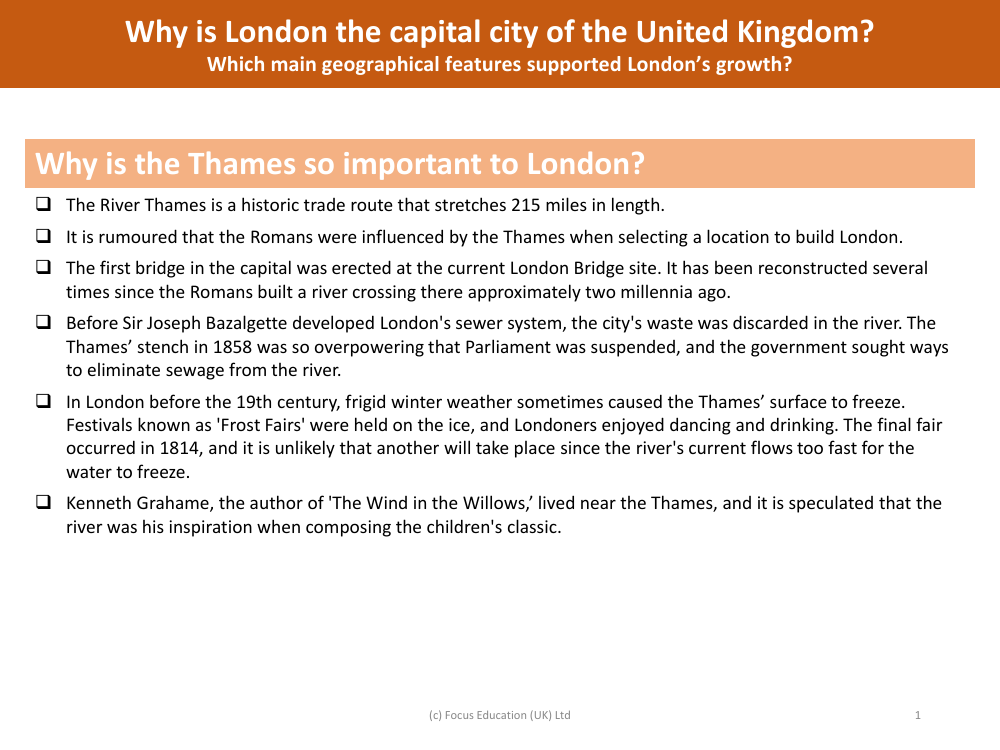Why is the Thames so important? - Info sheet

Geography Resource Description
The River Thames, stretching 215 miles, is not just a body of water but a vital artery that has played a pivotal role in shaping London's history. It is believed that the Romans might have chosen the site for London owing to the Thames' strategic advantages. The river has served as a historic trade route, and the first bridge within the capital, which has been rebuilt several times, was constructed at the site of the current London Bridge, dating back to Roman times. Before the modern sewage system was implemented by Sir Joseph Bazalgette, the river was used for waste disposal, leading to such a severe stench in 1858 that Parliament had to be suspended. Additionally, the Thames was once the site of 'Frost Fairs' during particularly harsh winters when the river froze over, with the last one held in 1814. The river also inspired Kenneth Grahame, author of 'The Wind in the Willows,' who lived nearby and is speculated to have drawn from it in his writing.
In the context of the ancient world, rivers were akin to the motorways of the Bronze and Dark Ages, essential for trade and movement, with the Thames being no exception. The Romans, lacking extensive road networks, relied heavily on rivers like the Thames for transporting materials and establishing fortifications, which cemented London's status as a significant port city. The name 'Tamesis,' meaning 'dark water,' is thought to have been used during the Roman occupation to describe the Thames. Furthermore, during World War II, the Thames served as an aerial landmark, guiding pilots during the nighttime Blitz. These historical significances underscore why the Thames is so integral to London and how its geographical features have supported the city's growth and establishment as the capital of the United Kingdom.






